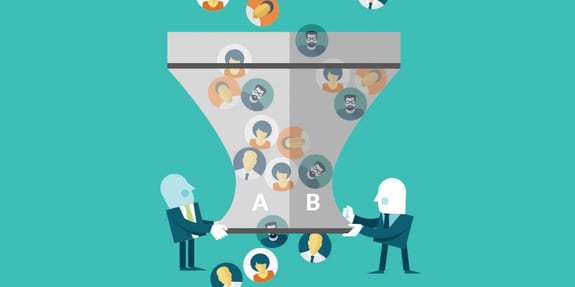A conversion is when a visitor comes to a website and then takes an action that the website owner wants them to take. This could be creating an account, signing up for a newsletter, downloading an app, making a purchase or any other sort of action.
Conversion rate optimization is a method of using user feedback and analytics to improve the overall performance of a website or marketing piece. In short, it is determining why your visitors are not converting and then fixing it.
Conversion rate optimization services usually include:
- A systematic and structured approach that will improve the performance of a given website over a period of time
- During this process information is gathered from insights – specifically those gathered from user feedback and analytics
- Every website is different and the optimization plan will be defined by its unique needs and objectives
- If the website already has pently of traffic to it we want to make sure we are making the most of the incoming traffic and converting as many qualified users as possible
Common pit falls of this process include :
- Making decisions based on what everyone else seems to be doing, hunches or guesses
- Making changes driven by the opinion of just one person
- A soul focus on getting traffic – regardless of engagement or quality
Some of the terms that you need to know when it comes to these types of services are:
- CTA or Call-to-Action – This is a primary link or button that will ask the user to do something specific to lead to a conversion. Examples are – Download Now, Sign Up or Buy Now just to name a few.
- Conversion Funnel – The primary flow or pathway of a user when a conversion is completed.
- Split Testing or A/B Testing – This is where one version of an interface element or page is tested against another version of it to see which one will generate quality conversions the most. In this type of testing, there is typically only one thing at a time that is tested.
- MVT or Multivariate Testing – This type of testing involves many variations of different elements in a variety of combinations in order to determine the combinations and elements that will perform the best.
In order to improve your conversion rates, you need to begin by finding out what your current conversion rate is and then you can identify spots that might be causing trouble and then you can develop a plan of action.
Numbers that are critical to this are your total conversions and the conversion rate.
Total conversions is the number of people who heeded the call to action on the web site.
The conversion rate is attained by taking the conversions and dividing that number by the total number of visitors that have come to the site. This is the number that conversion rate optimization services can help you with.
Why is it so Important?
It really isn’t important at all…unless you want your website to grow.
Regardless of how many visitors you are getting or how well organized your site it, there is always room to improve. You might make the conversion process easier or more appealing to those who are not converting.
It isn’t about getting the quantity of conversions, but rather the quality of them. What good is a conversion if they have absolutely no interest in doing business with you? You need conversions that will keep coming back and who are actually interested in what your site offers.
The Conversion Strategy
A conversion strategy is a strategy where you will test different elements according to your data and your audience. The results from these tests will allow you to better understand your customers, your design and your messaging.
Before you begin building the strategy, you need to define your goals. Create a distinction that is clear between your micro goals (subscribing to an email list, reading a white paper, etc.) and your end goal (meeting, phone call, purchase, etc.) Then you will be able to get started on the 3 elements of a conversion rate optimization strategy. These elements are:
- Content – you need to know your target demographic, what emotional triggers to employ and what they are looking for. Content that is valuable to them will allow for them to be pushed further down the sales funnel.
- Landing page – Most of the time, you will have about 2 and a half seconds to make your visitors want to stay on your page. This page is the most important element of your efforts at conversion rate optimization. This is the page that will transform a visitor into a lead.
- Continuity – For this to work, you need to make a commitment to continuously ongoing strategy and testing analysis. You shouldn’t expect to have spectacular results the first time. Don’t test everything at once either. Test one part at a time, learn from the results and implement any changes that need to be made.
Don’t forget to take all the time that is necessary to build your strategy. Think about your goals as well as your target demographic and what they are looking for. Don’t hesitate to call in pros or even to brain storm with members of your team so that your conversion rate can be optimized.



